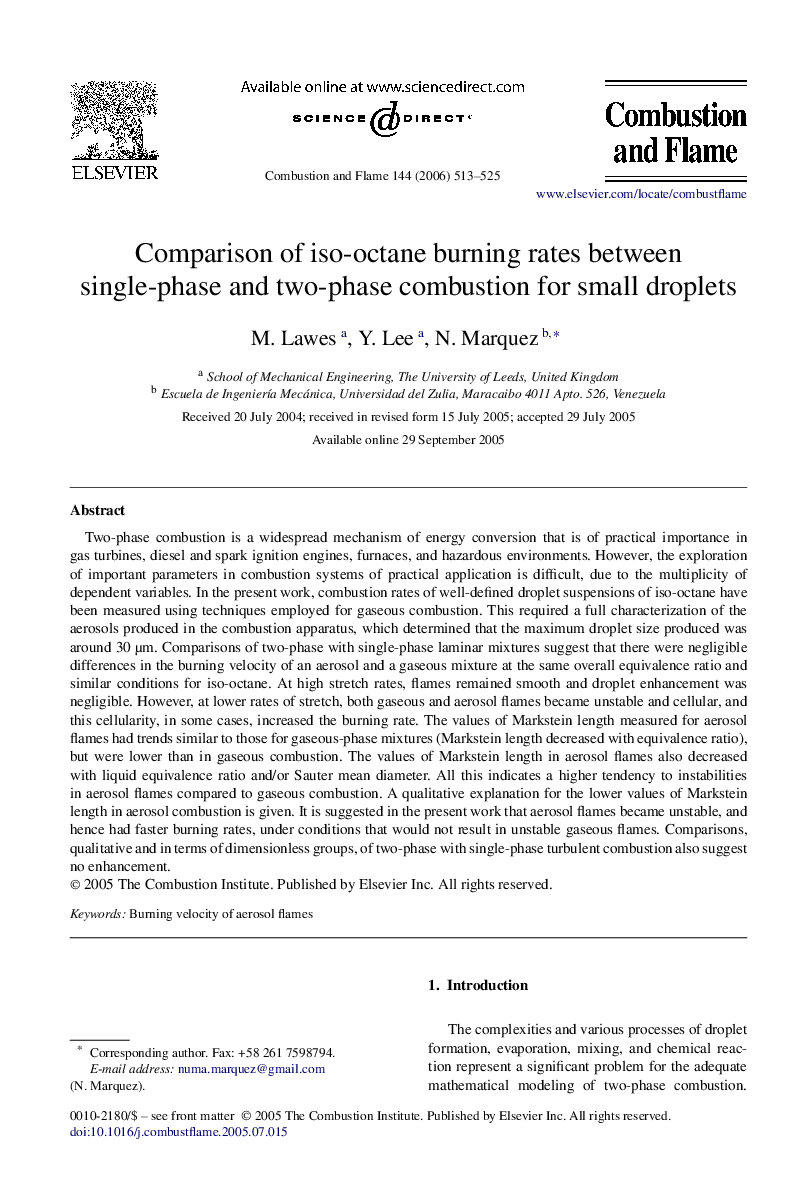| کد مقاله | کد نشریه | سال انتشار | مقاله انگلیسی | نسخه تمام متن |
|---|---|---|---|---|
| 167511 | 457866 | 2006 | 13 صفحه PDF | دانلود رایگان |

Two-phase combustion is a widespread mechanism of energy conversion that is of practical importance in gas turbines, diesel and spark ignition engines, furnaces, and hazardous environments. However, the exploration of important parameters in combustion systems of practical application is difficult, due to the multiplicity of dependent variables. In the present work, combustion rates of well-defined droplet suspensions of iso-octane have been measured using techniques employed for gaseous combustion. This required a full characterization of the aerosols produced in the combustion apparatus, which determined that the maximum droplet size produced was around 30 μm. Comparisons of two-phase with single-phase laminar mixtures suggest that there were negligible differences in the burning velocity of an aerosol and a gaseous mixture at the same overall equivalence ratio and similar conditions for iso-octane. At high stretch rates, flames remained smooth and droplet enhancement was negligible. However, at lower rates of stretch, both gaseous and aerosol flames became unstable and cellular, and this cellularity, in some cases, increased the burning rate. The values of Markstein length measured for aerosol flames had trends similar to those for gaseous-phase mixtures (Markstein length decreased with equivalence ratio), but were lower than in gaseous combustion. The values of Markstein length in aerosol flames also decreased with liquid equivalence ratio and/or Sauter mean diameter. All this indicates a higher tendency to instabilities in aerosol flames compared to gaseous combustion. A qualitative explanation for the lower values of Markstein length in aerosol combustion is given. It is suggested in the present work that aerosol flames became unstable, and hence had faster burning rates, under conditions that would not result in unstable gaseous flames. Comparisons, qualitative and in terms of dimensionless groups, of two-phase with single-phase turbulent combustion also suggest no enhancement.
Journal: Combustion and Flame - Volume 144, Issue 3, February 2006, Pages 513–525